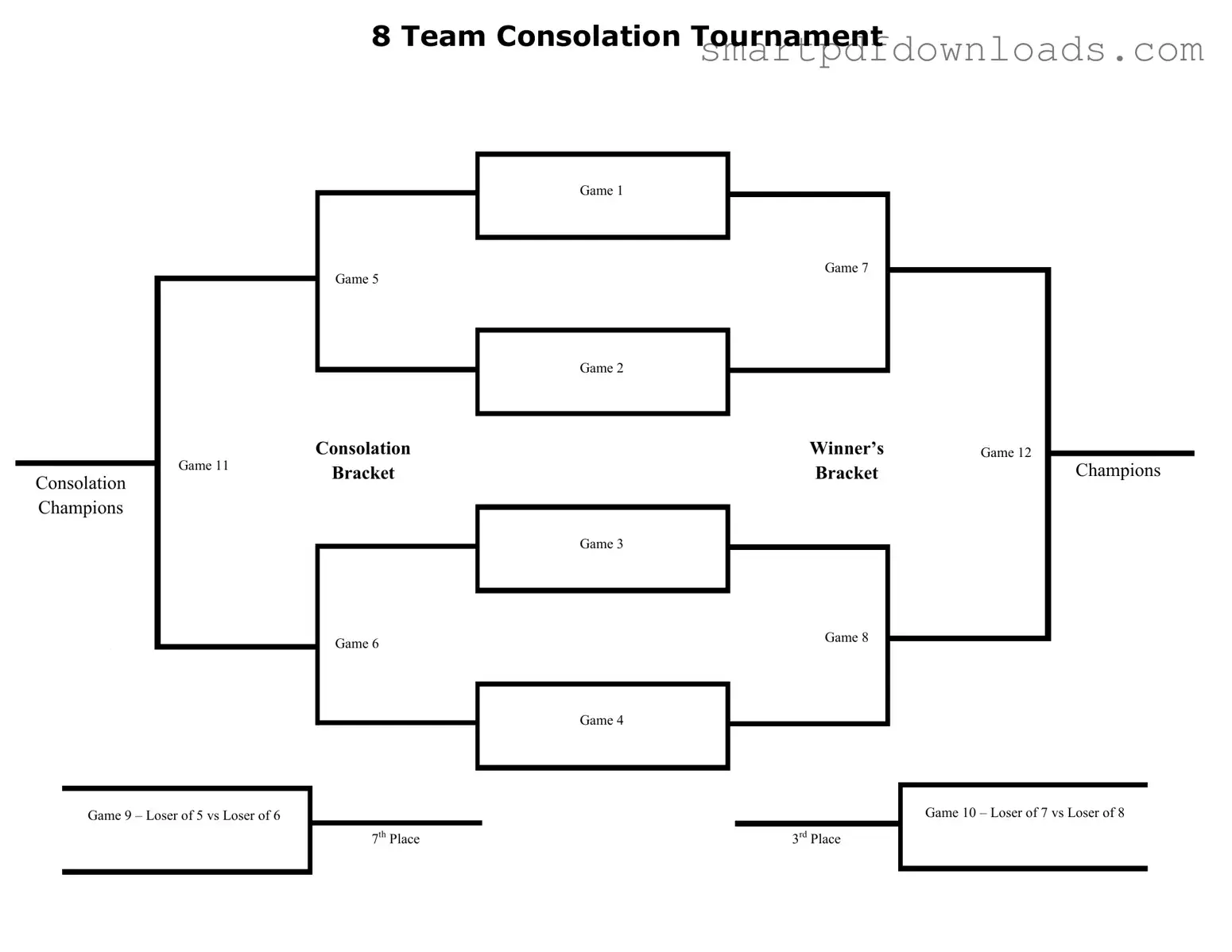Tournament Consolation Bracket Form
The Tournament Consolation Bracket form is a structured layout designed for organizing and tracking the outcomes of consolation games in a tournament setting. This form provides a clear visual representation of matchups, including games for 7th and 3rd place, ensuring that every team has the opportunity to compete for a better ranking. By utilizing this bracket, organizers can efficiently manage the flow of the tournament while maintaining fairness for all participants.
Edit Tournament Consolation Bracket Online

